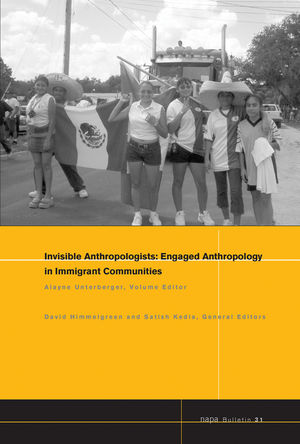Invisible Anthropologists: Engaged Anthropology in Immigrant CommunitiesISBN: 978-1-4443-3203-2
Paperback
200 pages
August 2009, Wiley-Blackwell
 |
||||||
This Bulletin is one such attempt. In it, we present a variety of perspectives, viewpoints, insights, and experiences of anthropologists who are actively engaged with immigrant communities across the United States, offering case studies from Florida, California, North Carolina, Texas, and Pennsylvania. Representing both university-based and NGO-based applied anthropologists, the authors discuss how deep, long-term engagement with immigrants has impacted our anthropological practice and how it in turn has shaped both theory and praxis. We share the personal and the professional, our challenges and our successes. The authors explore the nuances of our simultaneous, multiple roles vis-à-vis the immigrants themselves, the consequences of generational changes within our immigrant populations and how state policies, migration shifts and post-9/11 group responses have affected both our work and our multiple roles with communities. We present recommendations, lessons learned and future opportunities for U.S.-based anthropologists working with our unique brand of “exotic”—mainly Mexican and Latin American immigrants in 21st-century United States.



